Chapter: 11th Physics : UNIT 10 : Oscillations
Energy in Simple Harmonic Motion
ENERGY IN SIMPLE HARMONIC MOTION
a. Expression for Potential Energy
For the simple harmonic motion, the force and the
displacement are related by Hooke’s law

Since force is a vector quantity, in three dimensions
it has three components. Further, the force in the above equation is a conservative
force field; such a force can be derived from a scalar function which has only
one component. In one dimensional case

As we have discussed in unit 4 of volume I, the work done by the conservative force field is independent of path. The potential energy U can be calculated from the following expression.
Comparing (10.63) and (10.64), we get
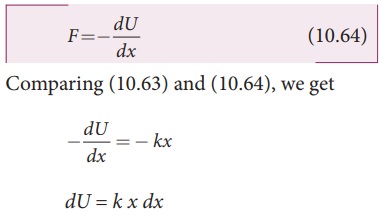
This work done by the force F during a small displacement dx
stores as potential energy

From equation (10.22), we can substitute the value of
force constant k = m ω2 in equation (10.65),

where
ω is the natural frequency of the oscillating system. For the particle
executing simple harmonic motion from equation (10.6), we get
x = A sin ωt
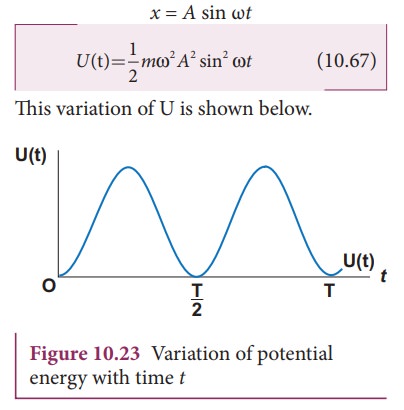
b. Expression for Kinetic Energy
Kinetic energy

Since the particle is executing simple harmonic
motion, from equation (10.6)
x = A sin ωt
![]()
![]() Therefore, velocity is
Therefore, velocity is

This variation with time is shown below.
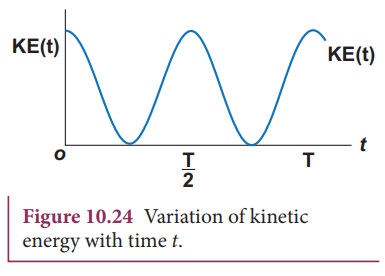
c. Expression for Total Energy
Total
energy is the sum of kinetic energy and potential energy
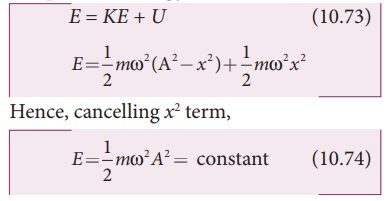
Alternatively, from equation (10.67) and equation
(10.72), we get the total energy as
E =1/2 mω 2 A 2 sin 2 ωt + 1/2 mω 2 A2 cos2 ωt
= 1/2 mω 2 A2 (sin2 ω t +cos2 ωt)
From trigonometry identity,
(sin2ωt + cos2ωt) = 1
E = 1/2 mω2
A2
= constant
which
gives the law of conservation of total energy. This is depicted in Figure 10.26

Thus the amplitude of simple harmonic oscillator, can
be expressed in terms of total energy.

EXAMPLE 10.15
Write down the kinetic energy and total energy
expressions in terms of linear momentum, For one-dimensional case.
Solution
Kinetic energy is KE= 1/2 mvx2
Multiply
numerator and denominator by m
KE= [1/2m]
m2 vx2 = [1/2m] (mvx
)2 = [1/2m] px2
where,
px is the linear momentum
of the particle executing simple harmonic motion.
Total
energy can be written as sum of kinetic energy and potential energy, therefore,
from equation (10.73) and also from equation (10.75), we get
E= KE +U(
x) = [1/2m]
px2 + 1/2
mω2 x2 = constant
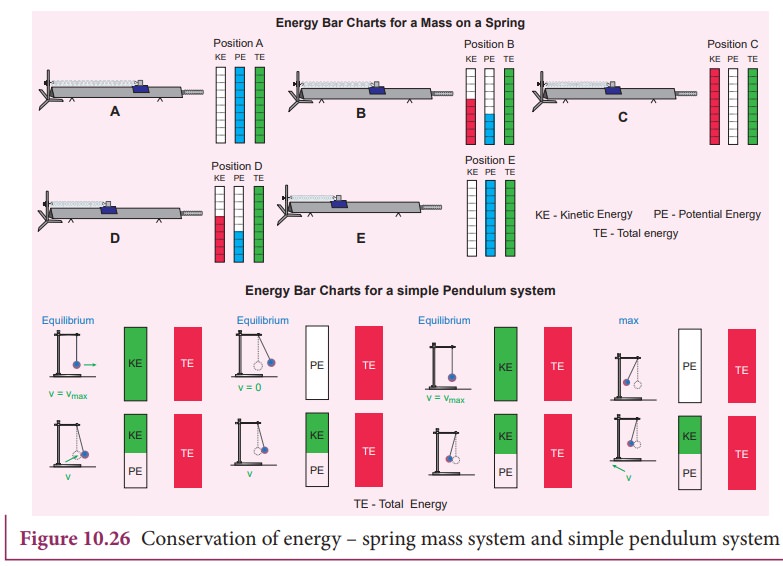
EXAMPLE 10.16
Compute
the position of an oscillating particle when its kinetic energy and potential
energy are equal.
Solution
Since
the kinetic energy and potential energy of the oscillating particle are equal,
1/2 mω 2
(A2 −
x 2
)
= 1/2 mω2 x2
A2 − x2 =
x2
![]()
![]() 2x2 = A2
2x2 = A2
x = ±A/√2
Related Topics